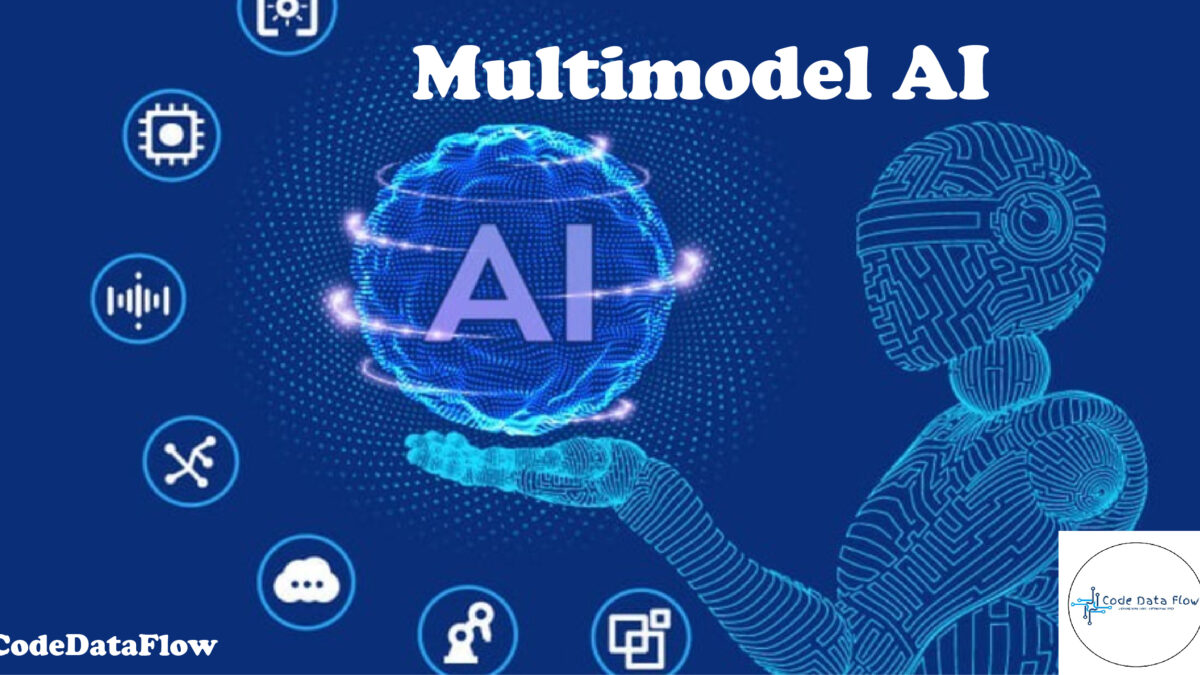
Multimodal AI: Transforming the Future with Vision, Text, and Voice Integration
What is Multimodal AI?
The capacity of artificial intelligence systems to analyse and comprehend several input data formats simultaneously, including text, pictures, audio, and video, is known as multimodal AI. This makes it possible for robots to use a variety of senses instead of just one form of input to understand the environment more as humans do.
For example, a person can get a more accurate sense of what is occurring when they see an image, hear a sound, and read a caption. The goal of multimodal AI is to make robots understand at this level.
Real-Life Example:
Consider how Google Lens can read a street sign aloud, translate it, and identify an object using your camera. Alternatively, how ChatGPT may interpret images and respond to your enquiries about them. These are examples of multimodal AI in action.

Why is Multimodal AI Important?
Multimodel AI systems frequently only do one modality of operation, such as text analysis, speech recognition, or image processing. Even while they work well, these single-track methods lose out on the rich context that may be obtained by mixing inputs.
The game is altered using multimodal AI, which combines several data kinds to:
- Enhanced Understanding: It allows AI to make better decisions by combining context from various sources.
- Human-Like Interaction: Makes voice assistants and chatbots more natural by adding visual and auditory data.
- Improved Accuracy: Merges multiple data types to increase the reliability of AI models.
- Broader Applications: Enables use cases in healthcare, autonomous vehicles, security, marketing, and education.
Real-Life Examples You Use Every Day
- Google Lens – Snap a picture of a flower, and it tells you what species it is—using both image recognition and contextual text suggestions.
- ChatGPT with vision and voice – Interact with an AI that can “see” an image, read text, listen to your voice, and respond intelligently.
- Self-driving Cars – Use cameras (vision), GPS (location), radar (motion), and sometimes even audio (honks, sirens) to make decisions in real-time.
Key Applications of Multimodal AI
Use Cases of Multimodal AI
Healthcare
AI models can read medical scans and interpret doctor’s notes simultaneously, improving diagnostic precision.
E-commerce
Multimodal AI powers features like visual search (upload a photo to find similar items) while also analyzing customer reviews to offer personalized recommendations.
Education
AI-driven tutoring systems can listen to a student’s query, evaluate hand-written notes, and provide visual learning aids, enhancing the digital learning experience.
Automotive
Autonomous vehicles combine camera feeds, sensor data, maps, and audio cues to navigate roads and prevent collisions.
Gaming and AR/VR
Next-gen games now feature AI that understands player voice commands, gestures, and facial expressions to deliver immersive gameplay.
Technologies Behind Multimodal AI
- Transformers (like CLIP, DALL·E, Flamingo)
- Multimodal Embeddings
- Neural Networks
- Data Fusion Techniques
- Pretrained Foundation Models
Future of Multimodal AI
Multimodal AI is anticipated to power digital humans, AI avatars, and highly customised assistants as technology advances. These will comprehend not just what you type or say, but also your location, feelings, and perceptions.
Multimodal capabilities will likely be incorporated into robots, marketing analytics, police enforcement, healthcare diagnostics, and perhaps smart homes. AI in the future will be extremely adaptable, emotionally intelligent, and context aware thanks to the merging of various data types.
Conclusion
Multimodal AI is a fundamental shift in how robots interact with the outside world, not merely a technological development. These systems may function more organically, act more intelligently, and provide much better user experiences by combining different kinds of data. Multimodal systems will take the lead in enabling robots to feel more human than ever as we advance into a more networked, AI-driven future.